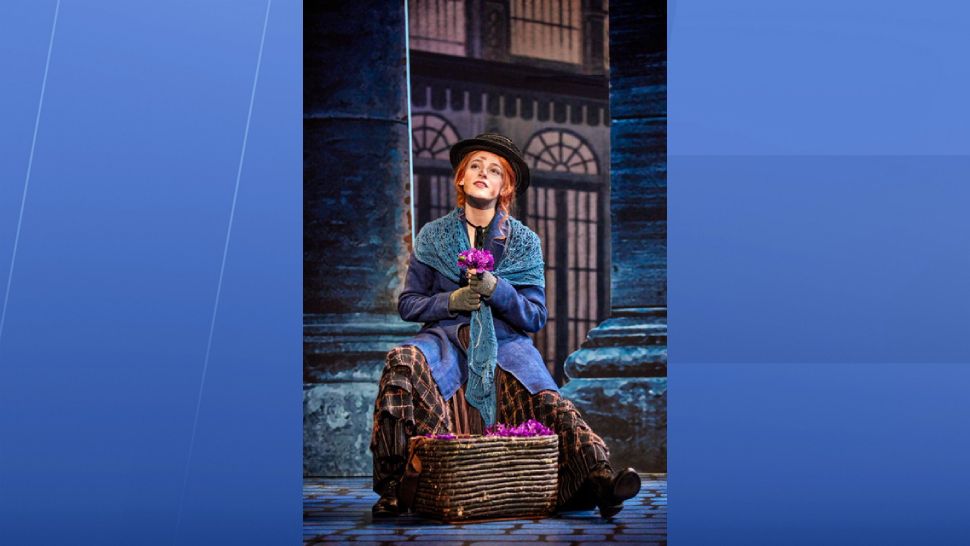MILWAUKEE — The Marcus Performing Arts Center brought yet another “loverly” Broadway musical to Milwaukee; “My Fair Lady” opened to a crowded Uihlein Hall Tuesday night, despite plenty of other events circulating the downtown area.
“My Fair Lady” tells the story of a professor who takes in a young woman as an experiment. He tries to “fix” her speech, teaching her to speak properly. In a few short months, he must pass her off as royalty at the Embassy ball. He does, and all the meanwhile falls in love with her. Yet, as a narcissistic man, he chooses, time and time again, to treat her poorly. He ultimately confesses his love, but it’s too late.
The musical, set in early 1900s London, births a perfect blend of the beloved elements of classical musical theater and all the quick-witted passion of modern Broadway.
“My Fair Lady” is certainly a musical ahead of its time. The show originally debuted in 1956; it’s based on the 1913 play “Pygmalion.” But even by today’s standards, is a feminist piece, anchored by the iconic Eliza Doolittle (Madeline Powell), poised to make any audience member stop and think. And that, after all, is the goal of art.
“My Fair Lady” is inarguably a beautiful work of art. The sets (Michael Yeargan) are visually stunning. Professor Higgins’ study, where much of the show takes place, is grand and immaculate, featuring a spiral staircase, books galore, more doors than I could keep track of and rich colors. Even the more simple sets, were poignant, such as the tent at Ascot. The sweeping drapes and brightness set the stage well and pulled the audience in to the ensemble-heavy scene.
Furthermore, the lighting (Donald Holder) spared no detail. As day turned to night, the windows outside of Higgins’ study began to dim and the trees outside became overcast by shadows. On the streets of London, deep purples turned to fiery oranges as the sun rose.
“My Fair Lady” is certainly worth a second look, but “pretty” can only do so much. The actors on stage are what brought this show to life.
Powell portrayed a charismatic, layered Doolittle. Powell embraced the smart, strong and brave woman that Doolittle is. When she finally lets Higgins know how she feels and stands up for herself, she brought a sense of empowerment and stability to the stage that is seldom seen from female leads.
Not to mention, her voice is captivating. Powell held great command of her dialects, which vary drastically throughout the show. Furthermore, her voice carried throughout her musical numbers with grace and she never faltered on emotion. Certainly, I could have listened to “I Could Have Danced All Night” all night.
Powell’s male counterpart, Jonathan Grunert, has an equally strong, consistent and potent voice. Higgins portrays the egotistical and patriarchal professor well, acting as a wonderful self-assured foil to Powell’s dynamite Doolittle. They each brought an energy that complemented, not distracted, from the other.
Grunert delivered his lines with confidence and ease, and while his character isn’t a villain per se, he successfully angered the audience nearly as much as Doolittle with his perfectly-timed one liners, balanced with a “loverly” amount of comedic relief.
With strong leads, a classic score and a stunning set, “My Fair Lady” has a lot going for it. The show, however is a little awkwardly paced. The beginning scenes, while important foundations of the plot, drag on for a bit too long. It isn’t until about halfway through the first act, when Doolittle shows up at Higgins’ house asking for speech lessons, that the show picks up to an even-keeled pace. Yet, at the end of the show, it almost moves too quickly and the ending feels abrupt. The ending could have been slowed so the audience could truly enjoy the final moments of power that Doolittle claims over her own life.
“My Fair Lady” runs at the Marcus Center through Jan. 8. Ticket information is available here.



